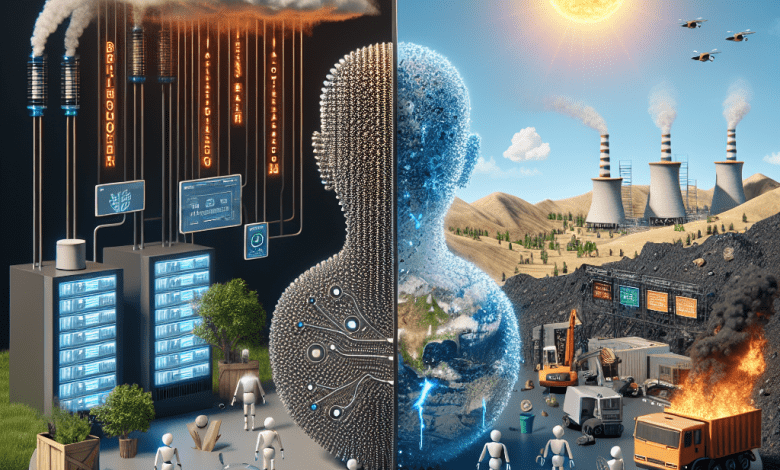How Generative Models Could Deepen the Climate Crisis

AI’s Environmental Impact: A Crisis We Can’t Ignore
By 2025, the environmental cost of AI’s growth will be front and center—both figuratively and literally. Let’s rewind to the summer of 2024, when we sweated through the hottest day ever recorded. It was a wake-up call about climate change, but the revelations didn’t stop there. Tech giants like Microsoft and Google fell short on their climate promises, sparking outrage and a renewed focus on AI’s hidden ecological costs.
The Real Price of Bigger Models
The trend of “bigger is better” in AI is creating serious environmental challenges. Large language models like ChatGPT and MidJourney aren’t just technological marvels—they’re also energy hogs. The energy demands, freshwater depletion, and rare earth mining add up to a staggering toll that’s hard to ignore.
The Energy Black Hole
Let’s talk about data centers—the backbone of AI applications. They already consume about 2% of the world’s electricity. In places like Ireland, that figure skyrockets to 20%. It’s so significant that the Irish government has paused new data center projects until 2028. Companies often claim to be “carbon-neutral” by buying renewable energy credits, but this doesn’t solve the problem. The grid still relies heavily on fossil fuels.
Take Virginia’s “Data Center Alley” as an example. Natural gas powers most of its operations, delaying coal plant closures and increasing carbon emissions. The problem doesn’t stop with energy. Cooling servers requires millions of gallons of freshwater, creating disputes in areas like Arizona and Spain. In Taiwan, chip manufacturing—critical for AI—has been prioritized for water access during a historic drought, leaving farmers struggling.
Generative Models: Heavyweights of Energy Use
Generative AI models are energy guzzlers, consuming up to 30 times more power than simpler models for similar tasks. Tools like ChatGPT and Google’s Gemini have become daily essentials, but companies rarely disclose their carbon costs. This lack of transparency makes it hard for users and policymakers to grasp AI’s true environmental impact.
The Big Tech Narrative
Some industry leaders dismiss these concerns. Bill Gates has called AI’s ecological footprint minimal, and OpenAI’s Sam Altman believes future energy innovations will address the problem. But here’s the thing—these views ignore the urgent need for sustainable practices right now.
Steps Toward Transparency and Regulation
So, what can we do? Proposals like the AI Energy Star initiative offer hope. This initiative aims to help users evaluate AI models based on energy efficiency. Voluntary measures like this could pave the way for stricter regulations. By 2025, governments and organizations like the UN may require companies to disclose AI’s environmental impact. Such transparency would be a crucial step toward balancing technological progress with environmental sustainability.
A Call to Action
The growing reliance on generative AI comes with a responsibility. We need transparent reporting, sustainable energy shifts, and tighter regulations to manage AI’s ecological footprint. If we fail to act, future generations will face the consequences of our inaction. The time to act is now—our planet depends on it.
Learn more about the challenges and solutions in this detailed report.
Stay Ahead in AI
Get the latest AI news, insights, and trends delivered to your inbox every week.





2 Comments